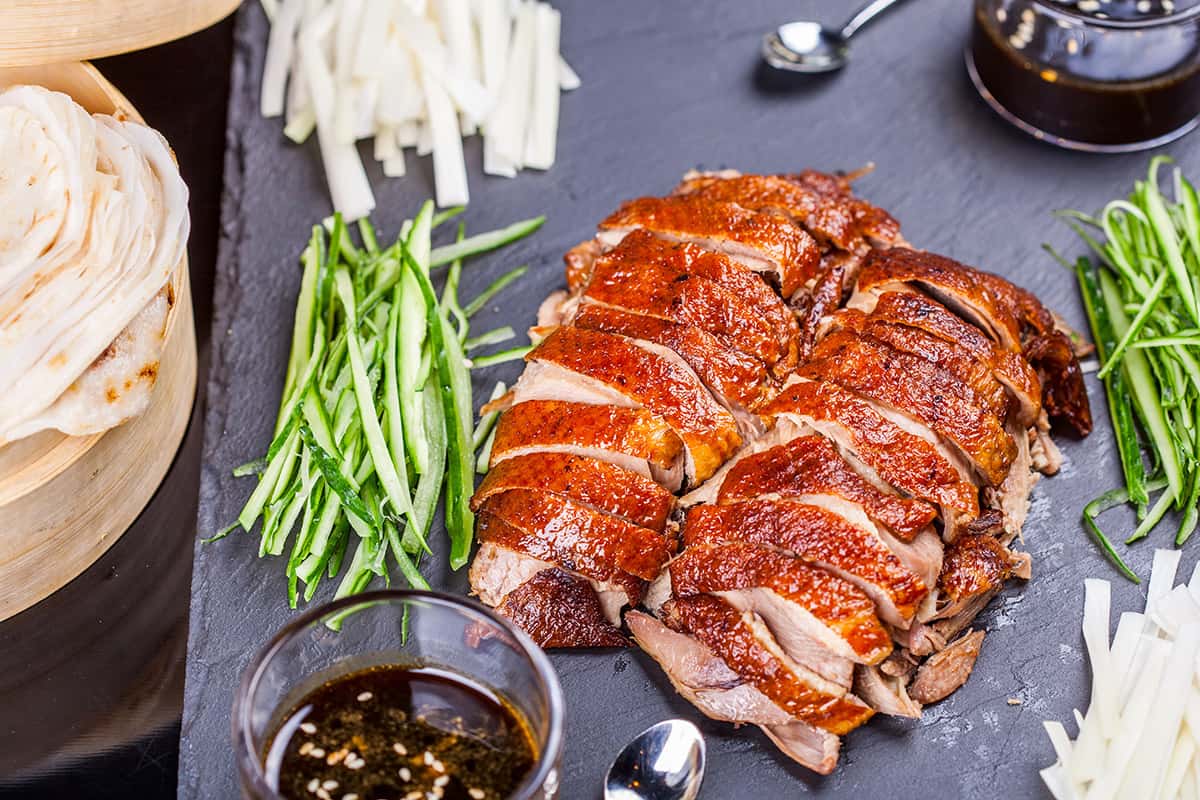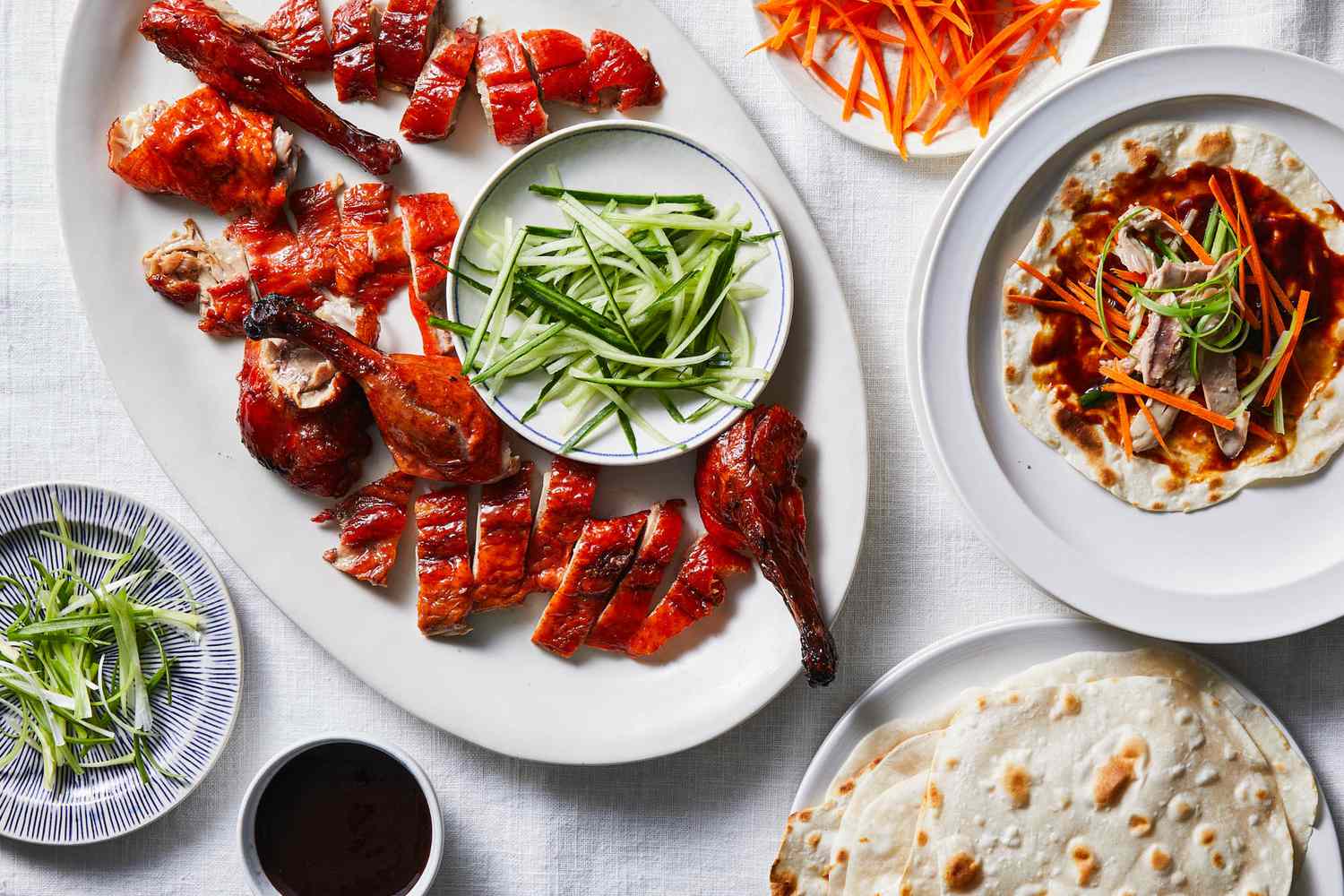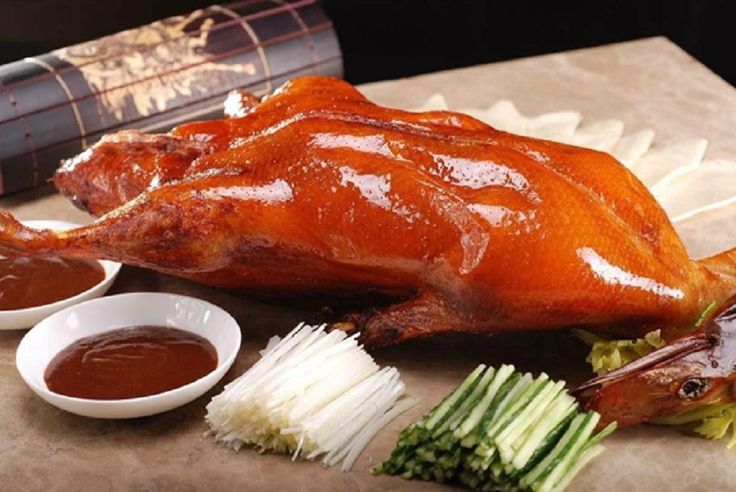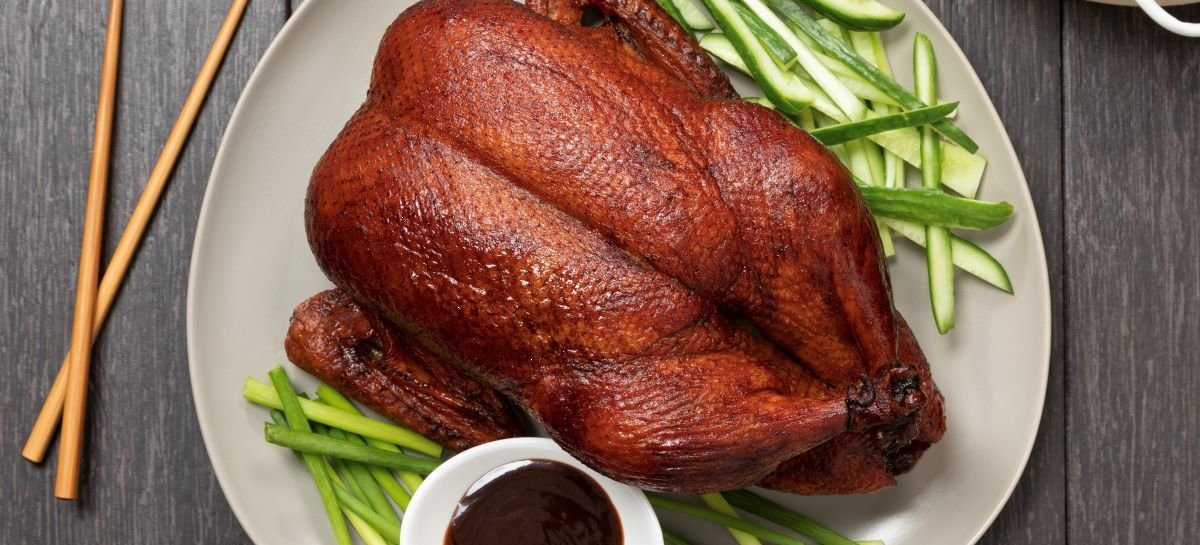Peking Duck is one of the most renowned dishes in Chinese cuisine, known for its rich history, intricate preparation, and exquisite taste. Originating from Beijing, this delicacy has become a symbol of Chinese culinary excellence and is celebrated worldwide. This article explores the history, preparation methods, serving traditions, and cultural significance of Peking Duck, highlighting why it remains a cherished dish for food enthusiasts around the globe.
Peking Duck History and Origins

Early Beginnings
The history of Peking Duck dates back to the Yuan Dynasty (1271-1368), where it was first mentioned in imperial court menus. The dish gained prominence during the Ming Dynasty (1368-1644), becoming a staple in the royal kitchens of the Forbidden City in Beijing. Its popularity continued to grow, and by the Qing Dynasty (1644-1912), Peking Duck was renowned throughout China.
Evolution Over Time
Initially, Peking Duck was a dish reserved for the elite, but over time, it became more accessible to the general public. As its fame spread, the cooking techniques and recipes were refined and perfected. Today, Peking Duck is not only a national treasure but also a sought-after delicacy in Chinese restaurants worldwide.
Preparation and Cooking Techniques
Selecting the Duck
The preparation of Peking Duck begins with selecting the right breed of duck. Traditionally, the Pekin duck, known for its tender meat and thin skin, is used. The ducks are typically raised for about 45 days and fed a special diet to ensure the desired quality.
Pre-Cooking Preparation
- Cleaning and Plumping: The duck is thoroughly cleaned and then pumped with air to separate the skin from the fat, which helps achieve the desired crispy texture.
- Blanching: The duck is then blanched in boiling water to tighten the skin.
- Glazing: A mixture of maltose syrup and water is brushed onto the skin to give it a glossy finish and enhance the crispiness during roasting.
- Drying: The duck is hung in a cool, dry place for several hours or overnight. This drying process is crucial for achieving the signature crispy skin.
Roasting the Duck
The traditional method of roasting Peking Duck involves using a closed oven or an open-air oven. The duck is hung inside the oven and roasted at high temperatures. The fat beneath the skin melts and bastes the meat, resulting in tender, flavorful duck with a crispy, golden-brown skin.
Modern Techniques
While traditional methods are still widely used, some modern techniques involve the use of specialized Peking Duck ovens or rotisseries. These methods ensure even cooking and can be more efficient in a commercial kitchen setting.
Serving Traditions and Accompaniments

Carving the Duck
One of the most distinctive aspects of serving Peking Duck is the carving process. The duck is typically carved tableside by a skilled chef. The skin is sliced thinly, often with a small amount of meat attached. The goal is to achieve a balance of crispy skin and tender meat in each slice.
Traditional Accompaniments
Peking Duck is traditionally served with several accompaniments that enhance its flavors and textures:
- Mandarin Pancakes: Thin, steamed pancakes are used to wrap the duck slices.
- Hoison Sauce: A sweet and savory sauce made from soybeans, garlic, and various spices.
- Spring Onions and Cucumbers: Thinly sliced spring onions and cucumbers add freshness and crunch to the wraps.
How to Eat Peking Duck
To enjoy Peking Duck in the traditional manner, diners take a slice of duck, place it in a pancake, add a dab of hoisin sauce, and top it with spring onions and cucumber slices. The pancake is then rolled up and eaten by hand, allowing the combination of flavors and textures to shine.
Cultural Significance
A Symbol of Chinese Cuisine
Peking Duck is often considered the epitome of Chinese culinary art. Its preparation requires skill, patience, and attention to detail, reflecting the values of Chinese cooking. The dish’s rich history and association with Beijing make it a symbol of the city’s cultural heritage.
Celebratory Dish
Peking Duck is frequently served during special occasions and celebrations, such as Chinese New Year, weddings, and important family gatherings. Its presence at these events signifies prosperity, honor, and good fortune.
International Fame
Peking Duck has transcended cultural boundaries and gained international acclaim. Renowned chefs and food critics around the world have praised its unique qualities, and it has become a popular dish in Chinese restaurants globally. In major cities like New York, London, and Tokyo, top-tier Chinese restaurants are known for their exceptional Peking Duck.
Variations and Modern Interpretations

Regional Variations
While the classic Beijing style remains the latoto most famous, various regions in China have their own interpretations of roast duck. In Guangdong, for example, the Cantonese version of roast duck is prepared with different marinades and cooking techniques, resulting in a distinct flavor profile.
Modern Twists
Contemporary chefs have experimented with Peking Duck, creating innovative dishes that honor tradition while introducing new elements. Some modern variations include:
- Duck Tacos: Inspired by the original wraps, but using soft taco shells and additional toppings like pickled vegetables and spicy sauces.
- Duck Salad: Incorporating slices of Peking Duck into a fresh salad with Asian-inspired dressings.
- Fusion Dishes: Combining Peking Duck with elements from other cuisines, such as Peking Duck pizza or sushi rolls.
Healthier Alternatives
For health-conscious diners, some chefs have developed lighter versions of Peking Duck, using less fat and more vegetables in the preparation and accompaniments. These adaptations retain the essence of the dish while catering to modern dietary preferences.
Making Peking Duck at Home
Simplified Recipe
While traditional Peking Duck can be complex to prepare, a simplified version can be made at home:
- Ingredients:
- 1 whole duck (about 5-6 pounds)
- 2 tablespoons maltose or honey
- 2 tablespoons rice vinegar
- 1 cup boiling water
- Mandarin pancakes
- Hoisin sauce
- Spring onions and cucumbers
- Preparation:
- Clean the duck and pat dry. Use a pump to inflate the skin or separate it by hand.
- Blanch the duck in boiling water, then glaze it with a mixture of maltose (or honey) and vinegar.
- Hang the duck in a cool, dry place for 4-6 hours to dry the skin.
- Roasting:
- Preheat the oven to 375°F (190°C). Place the duck on a rack in a roasting pan.
- Roast for about 1.5-2 hours, basting occasionally with the juices from the pan.
- Increase the oven temperature to 450°F (230°C) for the last 10-15 minutes to crisp the skin.
- Serving:
- Carve the duck and serve with pancakes, hoisin sauce, spring onions, and cucumbers.
Tips for Success
- Ensure the duck is thoroughly dried before roasting to achieve crispy skin.
- Use a meat thermometer to check the duck’s internal temperature; it should reach 165°F (74°C).
- Experiment with different marinades and glazes to suit your taste preferences.
Conclusion Peking Duck
Peking Duck is more than just a dish; it is a testament to the art and tradition of Chinese cuisine. Its intricate preparation, rich history, and cultural significance make it a culinary masterpiece that continues to captivate food lovers around the world. Whether enjoyed in a high-end restaurant in Beijing or recreated at home, Peking Duck offers a unique and unforgettable dining experience.
Read More Article About “Carlos Alcaraz: The Rising Star of Tennis 2024“
